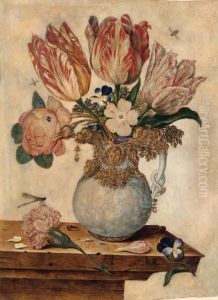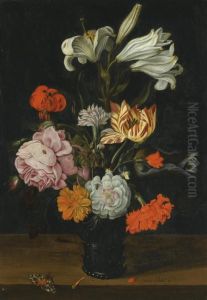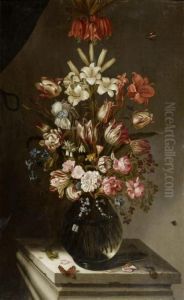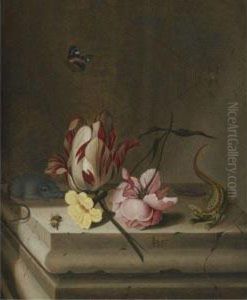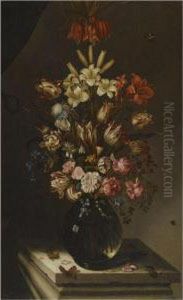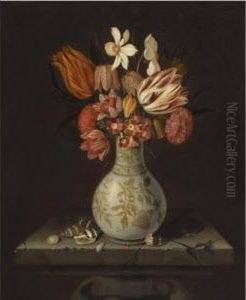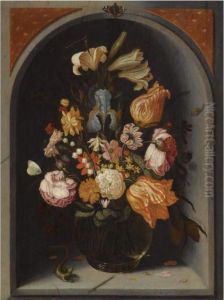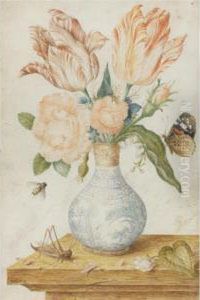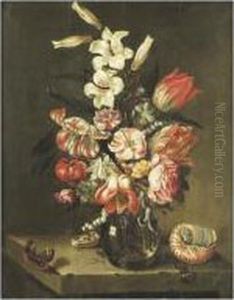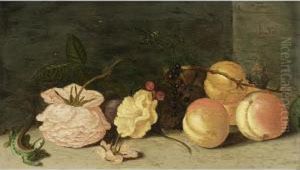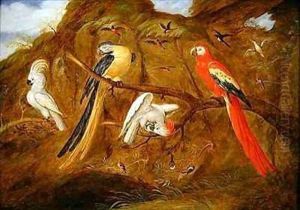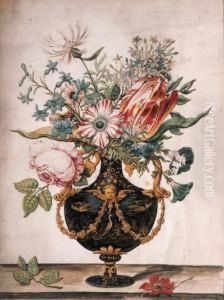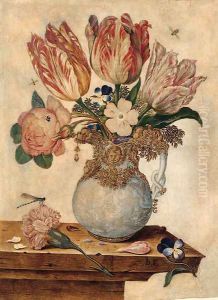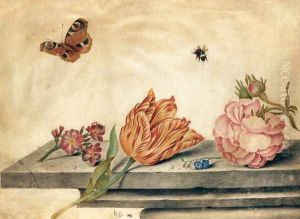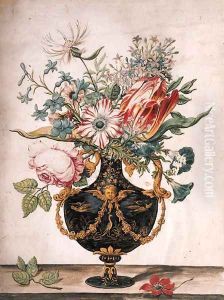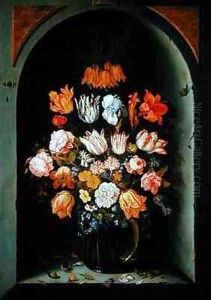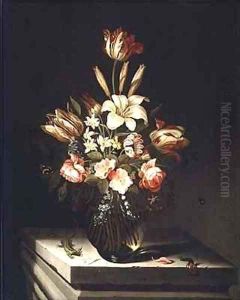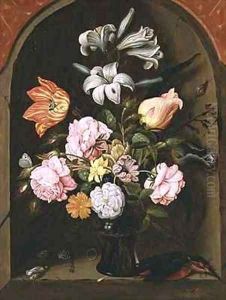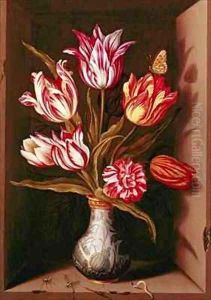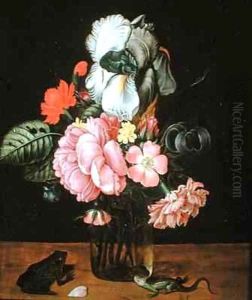Jan Baptist van Fornenburgh Paintings
Jan Baptist van Fornenburgh was a Dutch Golden Age painter and engraver, known for his work in creating still-life paintings, particularly of flowers. Born around 1585 in the Netherlands, van Fornenburgh’s early life remains relatively undocumented. His work, however, suggests that he was part of the Northern European tradition of floral painting, which became increasingly popular during the 17th century.
Van Fornenburgh’s paintings typically feature arrangements of flowers, sometimes in ornate vases, with a strong emphasis on detail and color. His compositions often included a variety of flower species, rendered with delicate brushwork to capture their ephemeral beauty. While he was not as well-known as some of his contemporaries, such as Jan Brueghel the Elder, his work contributes to the broader genre of floral still lifes that were sought after by wealthy patrons during the Dutch Golden Age.
Little is known about van Fornenburgh’s training or early career. He is sometimes mentioned in association with the town of Haarlem, where many still-life painters of the period were active. It is speculated that he may have been influenced by or worked with some of the prominent Haarlem painters like Willem Claesz Heda or Pieter Claesz.
The exact date of van Fornenburgh’s death is not known, but it is believed that he was active until the 1640s. His works are part of the collections of various museums, and they continue to be studied by art historians interested in the development of still-life painting in the Dutch Golden Age. The scarcity of biographical information and surviving works by van Fornenburgh make him a somewhat enigmatic figure, but his surviving paintings attest to a skilled artist who contributed to the rich tapestry of 17th-century Dutch art.
